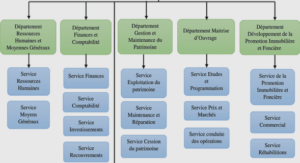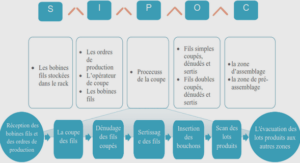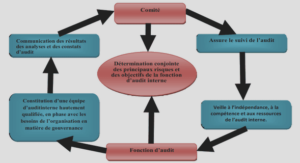In the current context of increasing anthropogenic selection pressures, such as climate change, pollution or artificial selection, it is essential to document the evolutionary potential of populations which can be rapidly submitted to new environmental conditions (Smith & Bematchez, 2008). The evolutionary potential is principaUy dependent on the genetic basis underlying phenotypic variation on which selection may act. To understand this potential, it is then necessary to discriminate the genetics and the direct effect of environmental components of variation, as weIl as the possible interaction between the two. The main genetic parameter used to predict the capacity of population to respond to selection is the heritability of a trait (Falconer & Mackay, 1996), that represents the additive component of genetic variation. The amount of additive genetic variance can be modified through local adaptations to native environmental conditions (Charmantier & Garant, 2005; Laugen et al., 2005; Visscher et al., 2008; Jetz et al., 2009), thus resulting in population divergence in genetic architecture and potential to respond to selection (Roff, 2000; UUer et al., 2002; de Brito et al., 2005).
The expression of additive genetic variance may also change in response to environmental conditions (Hoffmann & Merilii, 1999; Charmantier & Garant, 2005). Most evidences gathered so far suggest that habitat qua1ity can increase heritability of traits, under favorable conditions (Olsson & Uller, 2002; Charmantier & Garant, 2005; Jetz et al. , 2009; Robinson et al., 2009). Moreover, different genotypes can express different sensitivity to environments, resulting in genotype-environment interactions (Falconer & Mackay, 1996; Visscher et al., 2008). This in tum may modify the genetic basis ûn which selection pressure can act (Charmantier & Garant, 2005; Kruuk et al., 2008). Considering genotype-environment interactions is therefore fundamental towards understanding the evolutionary potential of populations.
Generally speaking, the ability of organisms to express different genes under different environmental conditions allows maintaining additive variance which is favorable for the capacity of response of populations (Charmantier & Garant, 2005; Laugen et al., 2005; Kruuk et al., 2008). On the other hand, this interaction may also reduce the evolutionary potential by reducing the speed of evolutionary changes especially in heterogeneous environments (Charmantier & Garant, 2005; Wilson et al., 2006). On the opposite, in production, genotype-environment interactions are frequently investigated as such interaction can limit the diffusion of genetic progress, they are thus undesired (Fishback et al., 2002; Kause et al., 2004; Maluwa et al., 2006; Saillant et al., 2006; Dupont-Nivet et al. , 2008). The relative role of these opposite effects of genotype-environment interactions is still poorly understood.
Parental effect is another factor that can influence the offspring genetic and phenotypic expression (Charmantier & Garant, 2005; Visscher et al., 2008). MaternaI effects are generaUy involved during early life when maternaI phenotype (like maternaI care, maternaI feeding or yolk sac quality) still influences offspring development (Falconer & Mackay, 1996; Heath et al., 1999; Perry et al., 2004a; Visscher et al. , 2008). Paternal effects can also modify offspring expression but their influence is still unclear (Cheng et al., 1987; Wang et al., 2006c). However, these effects may vary among populations and can have an impact on their evolutionary potential divergence (Perry et al., 2005a; Kruuk et al. , 2008).
An additional factor that can potentially affect evolutionary potential is the developmental time which can also modify heritability of traits. During ontogeny, phenotypic traits and their underlying genetic control can vary due to the differential agespecific expression of genes (Atchley & Zhu, 1997; Wilson & Réale, 2006). It is therefore important to examine heritability variations at more than one age towards a better understanding of response to selection of organisms through their lifetime (Atchley & Zhu, 1997; Obedzinski & Letcher, 2004; Wilson & Réale, 2006; Wilson et al. , 2007; Robinson et al., 2009).
The main objective of this study is to investigate ontogenic change in genetic, environmental and genotype-environment components influencing growth in mass among conspecific populations of brook charr (Salvelinus fontinalis) to assess their evolutionary potential. Brook charr is an endemic fish of northeastem North America. Its last colonization in eastem Canada is believed to have occurred 10 000 years ago, following the last glacier retreat (Castric & Bematchez, 2003; Thériault et al., 2007a). This species can occupy various environments: it can be lacustrine, river resident, or anadromous, inhabiting fresh or brackish water. It can also adapt to artificial environments and is an economically impOliant farming species that represents 60% of Québec’s freshwater aquaculture production (MAP AQ, 2007). Understanding the evolutionary potential of this fish has thus fundamental interest as it can be sensitive to various conditions and applied interest for its manallement in aauaculture. More soecificallv. ours objectives were (i) to investigate differences in the genetic basis of growth in mass among the three populations by comparing the relative importance of additive genetic effects in a common environment, (ii) to evaluate the environmental effects on heritability in each population in order to estimate the importance of genotype-environment interaction in the genetic control of growth and, (iii) to assess the parental and ontogenic effects on the observed patterns.
Brook charr populations
The Laval population (L) originates from a wild anadromous population from the Laval River (48°44’N; 69°05’W) on the north shore of the St. Lawrence estuary (QC, Canada). The fish used were from third-generation breeders reared in captivity at the Station aquicole ISMERJUQAR (Rimouski, QC, Canada). The Rupert population (R) originates from a northern lacustrine freshwater-resident wild population inhabiting the Rupert River system (51 °05’N; 73°41’W) (QC, Canada). The fish used as breeders were also from the third generation produced in captivity at the Laboratoire régional en sciences aquatiques (LARSA, Laval University, Québec, QC, Canada). The domestic population (D) has been widely used by Québec’s fish fanning industry for more than a hundred years and originates from many crosses between two freshwater strains (Nashua and Baldwin). Breeders of the domestic population were obtained from the Pisciculture de la Jacques Cartier (Cap-Santé, QC, Canada).
Rearing environments
In September, fish were divided among two reanng environments that differ according to tank rearing system, water source, and water temperature conditions. At ISMER, 230 fish per family were reared in 0.5 m³ indoor tanks under natural temperature and photoperiod conditions in running dechlorinated fresh water (density of about 35 kg m³ ) . To maintain sustainable rearing densities, the number of fish per family was gradually reduced to 60 by the end of the experiment, with all reductions in number being done randoml . Fish were fed daily (1 % w/w ration) with commercial dry pellets. At LARSA, 150 fish per family were reared in 3 m³ indoor tanks under natural photoperiod conditions at constant temperature of IOoe in recirculating fresh water (density of about 20 kg m\ Fish numbers were gradually decreased to 50 fish per family by the end of the experiment. Fish were fed daily CI % w/w ration) with commercial dry pellets. This experiment ended in November 2007 (21-months-old). The first three samplings were made at LARSA: 20 fish par family were randomly sampled (n = 600) at complete resorption of the yolk sac (about 2-months-old), 50 fish per family were randomly sampled (n = 1500) at 15 weeks after exogenous feeding (about 4-months-old), and 50 fish per family were randomly sampled (n = 1500) at 2136 degree-days in September 2006 (about 7-monthsold). Following transfer at the two rearing locations, 25 fish per family (n = 750 for each location) were randomly sampled every eight weeks. For each sampling, fish were anaesthetized in MS 222 (0.16 g L⁻¹ [3-aminobenzoic acid ethyl ester)) and their body mass (to the nearest 0.1 g) was measured. Mass was recorded for every remaining fish at the final sampling in November.
Data analysis
Data nomlality and homogeneity of variance were tested with Kolmogorov-Smimov and the Brown-Forsythe tests respectively. Mass data were log-transfonned before analysis to obtain homoscedasticity. Variance components were analyzed separately in each population and environment for each sampling time (ontogeny) and were estimated by Restricted Maximum Likelihood (REML) implemented in ASReml (V2.0;Gilmour et al., 2006) using the following model: y=µ+A+e .
INTRODUCTION GÉNÉRALE |






